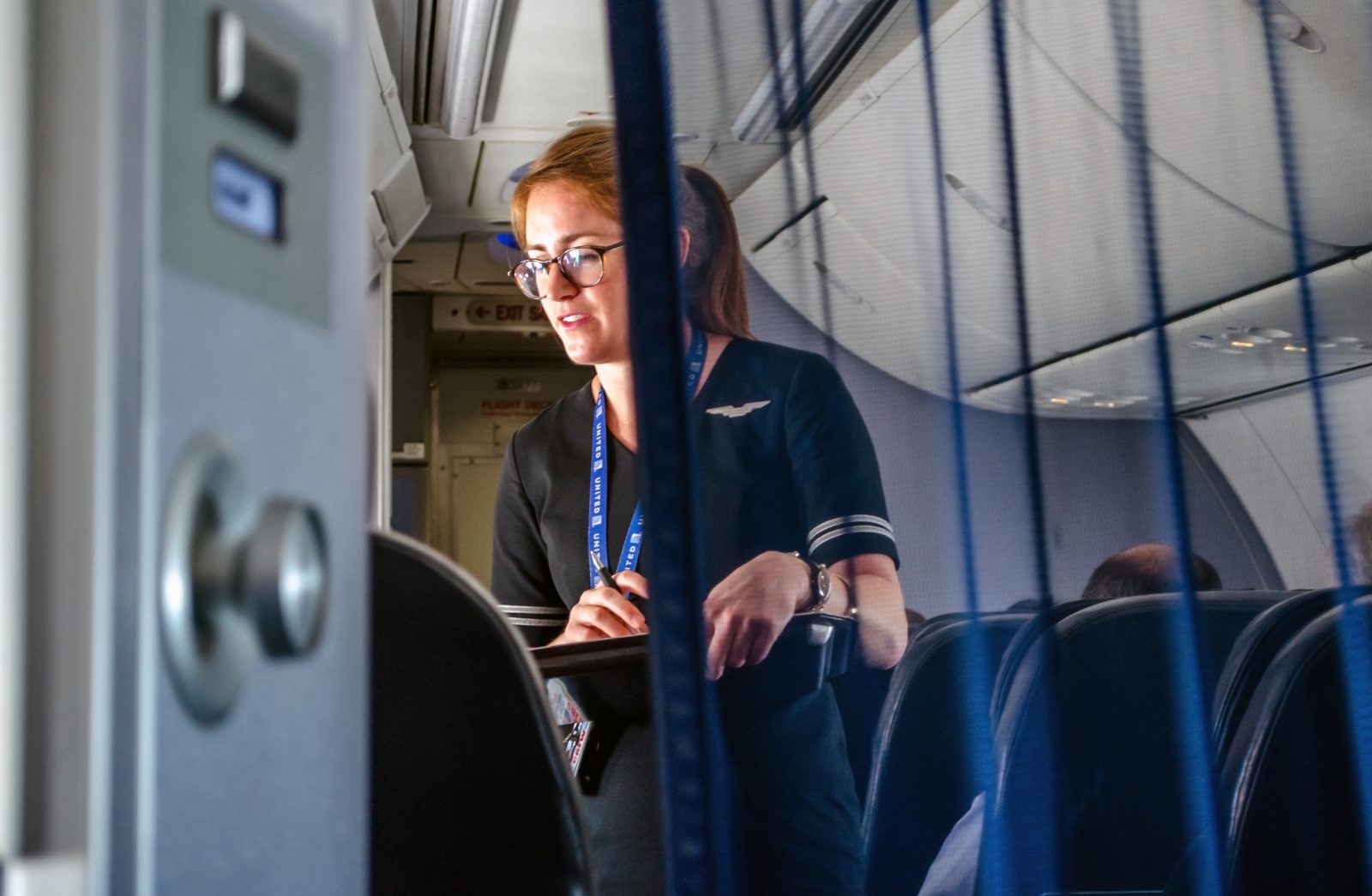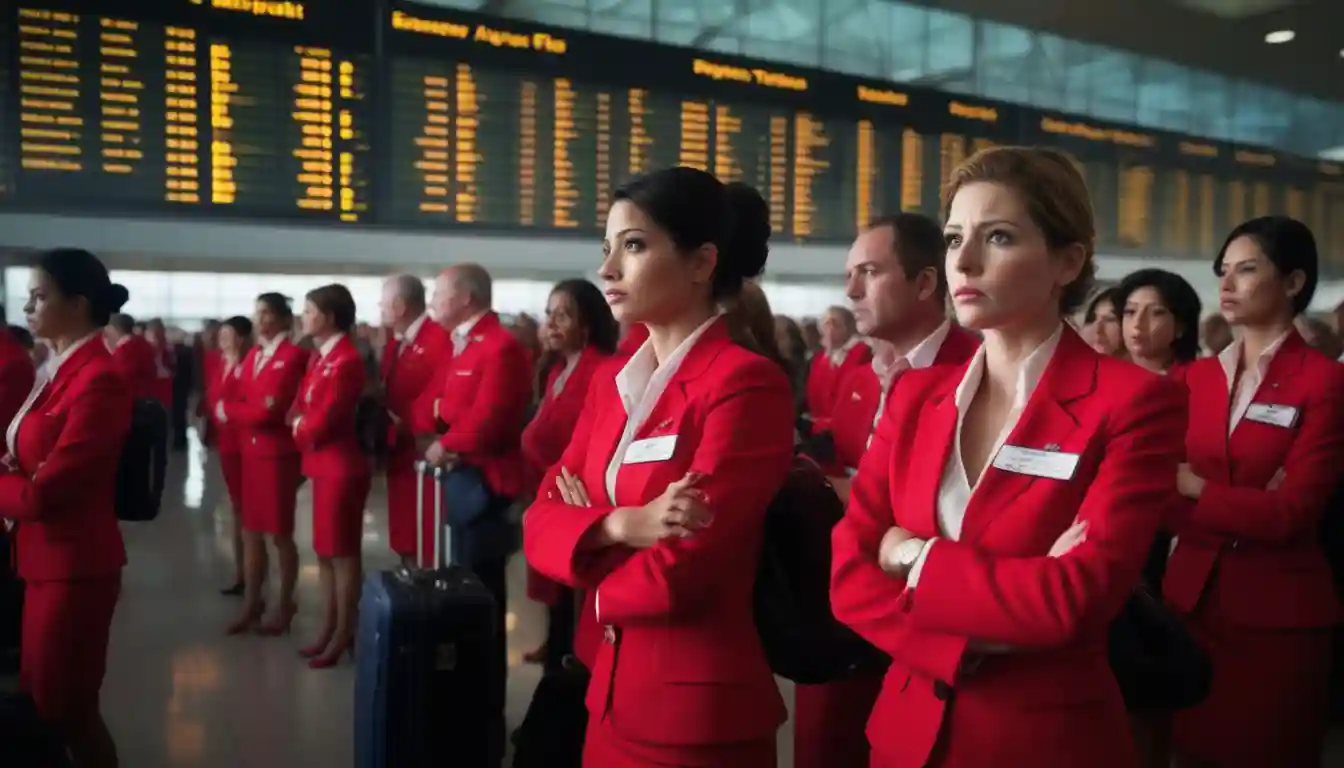When the Sky Falls Silent: Air Canada's Labor Standoff Exposes Deep Fractures in Canada's Industrial Relations
TORONTO — At 2 p.m. EDT on Sunday, August 17, a federal order commanded Air Canada's 10,000 flight attendants to return to work. By Monday morning, picket lines remained active outside Toronto Pearson International Airport, with union leaders publicly tearing up the government directive—a defiant act that legal experts describe as unprecedented in modern Canadian labor relations.

The standoff has grounded Canada's flagship carrier for three days, stranding 130,000 daily passengers and exposing fundamental tensions between federal authority and worker solidarity that extend far beyond aviation. What began as a contract dispute over wages and working conditions has evolved into a constitutional challenge that could reshape labor law across critical infrastructure sectors.
A Perfect Storm of Precedent and Protest
The collision between federal intervention and union resistance represents something entirely new in Canadian industrial relations. While Ottawa has increasingly deployed Section 107 of the Labour Code to force binding arbitration in transport disputes—from WestJet mechanics to railway workers—no major union has openly defied a Canada Industrial Relations Board back-to-work order with such coordinated resistance.
Did you know that Section 107 of the Canada Labour Code empowers the federal Minister of Labour to intervene directly in labor disputes to maintain industrial peace? When negotiations fail and strikes threaten essential services or the economy, the Minister can refer issues to the Canada Industrial Relations Board and direct it to take measures such as ordering binding arbitration or imposing agreements. This powerful yet controversial tool is used sparingly but has become more common in recent years to resolve major disputes in critical sectors like transportation, balancing the need for peace with union rights.
"We're witnessing a fundamental stress test of Canada's industrial relations framework," observed one labor law specialist who requested anonymity due to the sensitive nature of ongoing proceedings. The specialist noted that union leadership now faces potential contempt of court charges, fines, or imprisonment if they continue defying federal orders.
The Canadian Union of Public Employees has characterized the intervention as an "unconstitutional attack" on collective bargaining rights, launching a Federal Court challenge while maintaining picket lines. This dual-track strategy—legal resistance coupled with continued job action—marks a significant escalation in labor tactics that could influence future disputes across federally regulated industries.
The Economics of Time: Why Boarding Pay Became a Breaking Point
At the heart of this dispute lies a compensation structure that industry analysts describe as increasingly untenable in the post-pandemic aviation landscape. Flight attendants currently receive pay only when aircraft are in motion, creating what labor economists term a "temporal wage gap" for boarding, deplaning, and ground duties that can comprise 20-30% of total work time.

Did you know the "Temporal Wage Gap" in aviation refers to the significant pay differences that emerge over time due to factors like experience, rank, and employment type? New pilots often start with modest salaries, but earnings can increase dramatically as they gain seniority and move to higher positions. Temporary or contract workers usually earn less than permanent staff, and gender or minority groups may face slower career progression, amplifying wage disparities. This gap highlights how long-term career structure and job security shape pay in the aviation industry, influencing fairness and talent retention.
Recent precedents in the U.S. aviation sector have fundamentally altered bargaining expectations. American Airlines implemented boarding pay at 50% of hourly rates effective April 1, 2025, while Alaska Airlines ratified agreements featuring boarding compensation worth approximately 8% of total compensation packages. United Airlines flight attendants rejected a tentative agreement in July 2025, demanding pay for all hours worked—a signal of elevated expectations across the industry.
"The Canadian market cannot operate in isolation from these compensation resets," noted one Bay Street aviation analyst. "When U.S. carriers are implementing structural pay increases for ground time, Canadian airlines face both recruitment challenges and internal pressure to match those standards."
Financial Turbulence: Market Implications and Investor Concerns
Air Canada's decision to suspend its financial guidance for both the third quarter and full year 2025 signals management's inability to quantify the ultimate cost of resolution. The company had previously projected capacity increases of 3.25-3.75% for Q3 and adjusted EBITDA of C$3.2-3.6 billion for the full year.
Estimated daily financial impact of the strike on Air Canada, with revenue losses of C$65-70M and EBITDA erosion of C$10-25M per day.
| Metric | Estimated Impact | Source/Details |
|---|---|---|
| Daily Revenue Loss | C$50 million - $60 million | Estimate from a former Air Canada executive. Industry analysts also suggest losses could exceed C$50 million. |
| Daily Revenue Loss | Exceeds $98 million | The financial toll has been severe, with the airline's stock dropping significantly. |
| Daily Passenger Impact | Approximately 130,000 passengers | A potential strike is anticipated to lead to the cancellation of around 500 flights daily. |
| Financial Guidance | Withdrawal of Q3 and full-year 2025 earnings guidance | Air Canada suspended its financial forecasts due to the operational disruptions caused by the strike. |
| Market Value Impact | $1.4 billion loss in market value | Air Canada's stock saw a significant drop of 14.25% in July 2025. |
Investment analysts estimate the daily revenue impact at approximately C$65-70 million, with EBITDA erosion of C$10-25 million per day of complete mainline shutdown. However, the longer-term implications extend beyond immediate disruption costs to fundamental shifts in unit labor costs.
Market modeling suggests that implementing boarding pay structures comparable to U.S. carriers could increase Air Canada's annual labor costs by C$150-250 million by fiscal 2027-28. While substantial, this figure remains manageable against the airline's pre-strike EBITDA guidance, particularly given strong cash reserves of C$7.0 billion as of June 30, 2025.
"The market is pricing operational disruption, but the real question is whether this becomes a permanent step-up in the cost structure," explained one institutional investor who covers the transportation sector. "If boarding pay becomes standard across Canadian aviation, it's a sector-wide margin compression that fundamentally alters investment thesis assumptions."
Ripple Effects Across the Aviation Ecosystem
The strike's impacts extend far beyond Air Canada's operational network, creating temporary market distortions that competitors are positioning to exploit. U.S. carriers and other international airlines can command premium pricing on transborder and transatlantic routes while Air Canada remains grounded, potentially generating short-term revenue upside for carriers with available capacity.
Domestic competitors including WestJet and Porter Airlines face their own strategic calculations, as any resolution setting new compensation precedents will inevitably influence their own labor negotiations. Industry sources suggest that successful implementation of boarding pay at Air Canada could accelerate similar demands across all Canadian carriers, creating what economists term a "wage contagion" effect.
Did you know that "wage contagion" describes the way wage increases in one group or sector can spread to others, even if they weren’t originally involved? This ripple effect happens because workers often compare their pay with peers in other industries or companies, leading to broader wage pressures and demands. Wage contagion plays a key role in shaping wage dynamics, influencing everything from labor market competition to inflation and wage-setting policies.
The cargo sector faces particular disruption, as Air Canada's grounded passenger fleet eliminates significant belly cargo capacity on key routes. This temporary supply constraint has already begun influencing spot cargo pricing on select international lanes, though the company's dedicated freighter operations continue operating.
Constitutional Questions and Political Calculations
The union's constitutional challenge raises fundamental questions about the balance between federal authority and collective bargaining rights in essential services. Legal experts note that while Section 107 has been used more frequently since 2011, the current level of open defiance creates unprecedented precedent risks for both sides.

"Ottawa faces a political bind," observed one constitutional law expert. "Aggressive enforcement of the order demonstrates federal authority but risks creating martyrs and potentially inflaming broader labor tensions. Tolerating defiance undermines the tool's effectiveness for future disputes."
The broader Canadian labor movement has rallied behind the flight attendants, with multiple unions condemning federal intervention as an erosion of fundamental rights. This solidarity could influence future disputes across federally regulated sectors, potentially making Section 107 interventions less effective as a conflict resolution mechanism.
Investment Outlook: Navigating Uncertainty
For institutional investors, the current crisis presents both immediate risks and longer-term strategic considerations. Near-term volatility remains elevated pending resolution, with equity markets likely to remain sensitive to headlines regarding settlement terms or enforcement actions.
The base case scenario, assigned approximately 70% probability by market participants, involves a negotiated settlement within days that includes boarding pay provisions, meaningful wage increases, and operational restart within a week of agreement. This outcome would likely trigger a relief rally while establishing new baseline assumptions for labor costs.
Alternative scenarios include court-enforced compliance leading to compelled arbitration, or prolonged legal warfare that could necessitate direct legislative intervention. Each path carries distinct implications for both Air Canada's operational recovery and broader precedent effects across Canadian industrial relations.
Market participants emphasize that while the immediate disruption commands attention, the ultimate resolution will establish new norms for compensation structures across Canadian aviation—with implications extending well beyond a single carrier's cost base.
This analysis represents informed market perspective based on current data and established patterns. Past performance does not guarantee future results, and readers should consult qualified financial advisors for personalized investment guidance.
